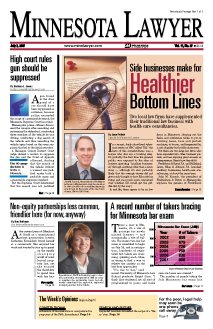A decision issued by the Minnesota Court of Appeals last week, Gagliardi v. Ortho-Midwest, involved a claim brought by a woman who said she was fired in retaliation over a report of sexual harassment made on her behalf. (The woman was terminated after her boyfriend sent an e-mail to the employer's client accusing one of the client's employees of harassing her; the court found that the anti-retaliation statute did not cover reports made by third parties, such as the boyfriend.)
The case had an equally interesting side point. The court criticized plaintiff's counsel for not including facts in the plaintiff's brief that arguably showed some of the alleged harassing behavior may have been consensual. The appellate court said that it found the factual omissions in the plaintiff's brief "troubling."
It is difficult sometimes for lawyers as advocates to include facts that might not be favorable to their client's position, but it's important that they do so. Not dealing with "bad" facts allows the other side (which will, of course, have those facts in its brief) to frame the issue. More importantly, once a court comes to the determination that you did not put relevant facts in your brief, the rest of the brief's content -- rightly or wrongly -- becomes suspect, compromising the effectiveness of how you presented the case.
This case should serve as a reminder to all lawyers to make sure the court has all the facts it needs to render a just opinion. Lawyers' duty to be zealous advocates for their clients should never make them lose sight of their overarching obligations as officers of the court.
Subscribe to:
Post Comments (Atom)

No comments:
Post a Comment